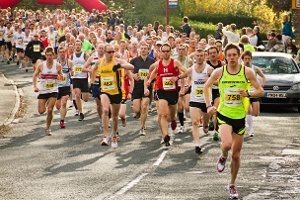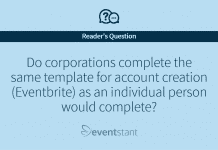
A charity run is a great way to raise funds for a good cause. Not only does it raise money, it also generates interest within the immediate community where the charity or event is based in. Charity runs are healthy and highly interactive, and gives an opportunity for participants to engage with the cause directly.
A sense of oneness is naturally built up amid a healthy environment, which is great for an office-based society. Come out for a breath of fresh air.
Here's the 13-point checklist to help you plan a charity run:
1. Be inclusive
The more people you allow to join your charity run event, the more money that you will raise, (as participants will be paying to join the run) and the more general public interest will be generated (as each new participant has a circle of friends and backers). So, regardless of age and physical stamina, try to be as inclusive as possible.
2. Choose your route carefully
Consult a running club in the area for advice on route options. Give them the profile of your participants who are running so they can better advise you on a course that factors in the range of ages and health qualifications of your participants.
3. Map out the route
Now is the time to test the route yourself. Try to observe is the road smooth? Is there heavy traffic at certain parts of the route? Are there elevated portions on the track that may be more difficult for some of your participants? What about overall safety? Will you be passing through areas where construction is ongoing? You want a route that is accessible by public transportation so more people can view your charity run, and you want to ensure there is enough parking space for everyone. At the same time, you have to balance these benefits with the safety of your runners.
4. Take note of your resources and volunteer staff
Charity runs usually require food, portable toilets, signs (for start, finish, services and support areas), two-way communication radios, trash cans, tents, tables, water, rope, cones and tape to mark off the running area, a generator, PA system, and a stage for the awards ceremony. You will also have to make sure that there is enough volunteer staff to be available for the needs of participants.
5. Position resources
Place trash cans, concession stands, water stops, portable toilets et al in strategic locations where they will be most in need. Also remember that you will have to have more of these at the finish area where a crowd is bound to gather.
6. Check-in with the law
Talk to the local authorities or the people who own the land where your route is charted. Ask what permits are required. Regulations and local laws differ from city to city, so be clear about all the permits you need, and get them AHEAD of time. You also need to have permission from the charity organization that you are raising money for to use its name.
8. Get insurance
This is for any medical needs that may arise during the charity run. Liability insurance should also cover possible damage that may occur to the land and properties along your route.
9. Have a medical team on site
Running is a physical exercise, and it is possible for people to get sick for one reason or another. It is very important to have a medical team (ambulance) on site at your event in case anyone needs medical attention. Contact local ambulance service provider to see if they would like to become a sponsor of your event by donating their services for a few hours at the event.
10. Market your event
Traditional marketing — radio, newspaper ads, mail, signs posted around town — is expensive. However, the charity itself might have means to public announcements through traditional channels, noting that it is for their own fundraising, and even use the announcements to generate fundraising.
A cheaper and very effective option is to go online. Build a website for your event, and announce the charity run on Facebook, Twitter, LinkedIn and other social media. Join forums, comment, and link back to the website. Also, many websites will permit free listings on their events calendar. List yours with a link to your website. Send email advertising to your subscribers and the list of supporters of the charity.
Social is not only online, but offline too. Get your friends and family members to spread the word to their circles, as well provide promotional tools at the end of the registration process for them to promote your run.
11. Now is the time to work on fundraising
Perhaps the local market (or supermarket) is willing to donate fruit, drinks, and other food items for the charity event. Think about your resources and make a list. Once you know what you need you can begin contacting local businesses to ask them to become a sponsor of the event, and donate the good or services that you need.
Don't hesitate to ask local businesses to sponsor your event. On one hand, bigger businesses sponsor charity events all the time. On the other hand, small local businesses will be excited that they were asked to sponsor your event and promote their business. Social responsibility is important regardless of the business size.
12. Create an email campaign to build up excitement before the event
Announce developments, training plans for physical fitness, incentives if they recruit someone, etc. Send your last email 3 days before the event. This should include all details, including start time, where to check in, events schedule, prizes, hotels near the area (if anyone plans to stay overnight), and a map of the route.
13. Follow-up after the event is over
After the event, send email to participants and offer a discount for early registration for the next event. Include an online survey, so participants can state what they liked and didn’t like about the event.
Photo by rofanator









![How Important Are Face to Face Meetings [INFOGRAPHIC]](https://eventstant.com/wp-content/uploads/faceToface_v11-sm-218x150.jpg)









